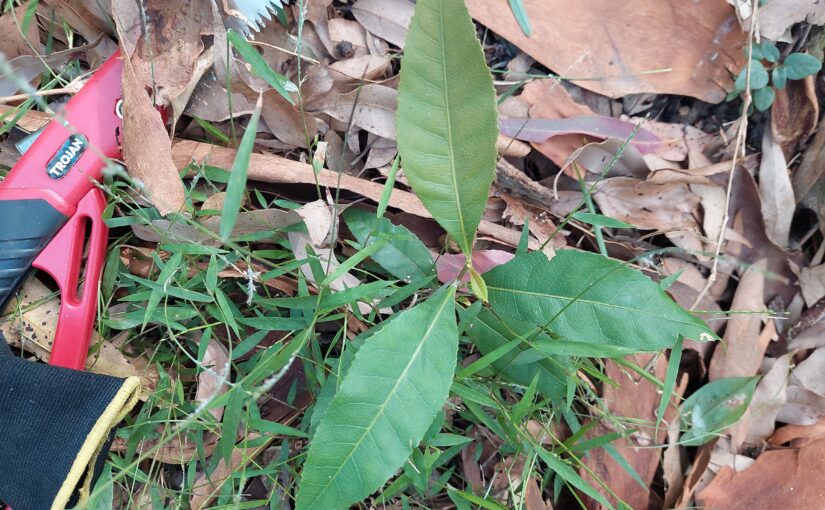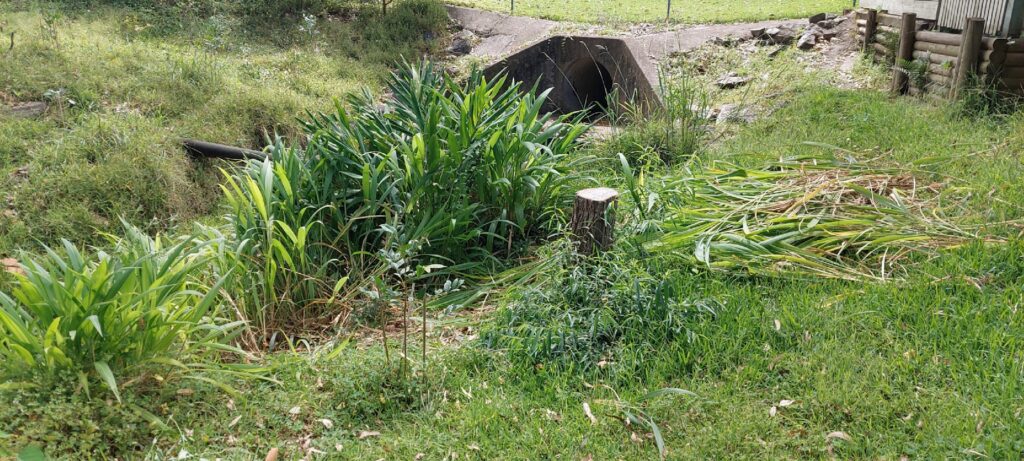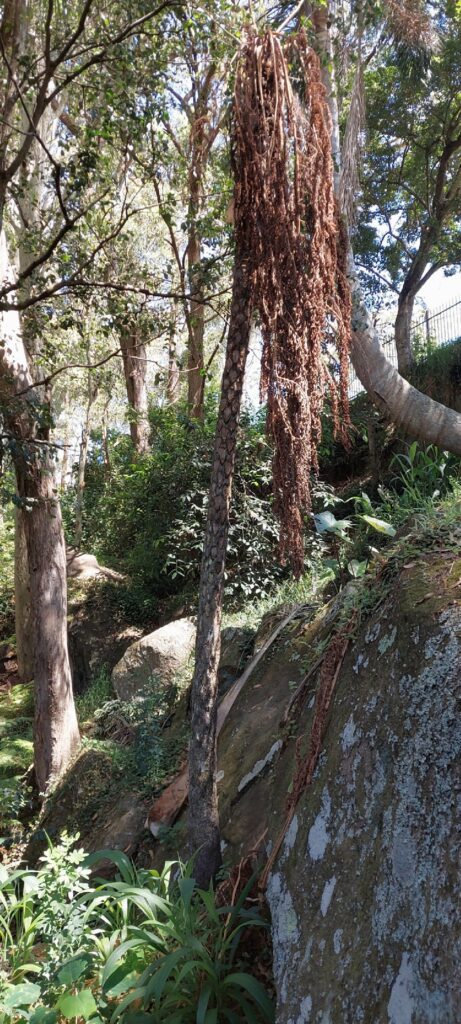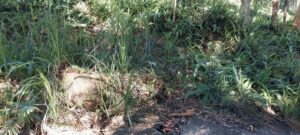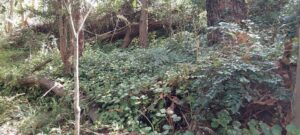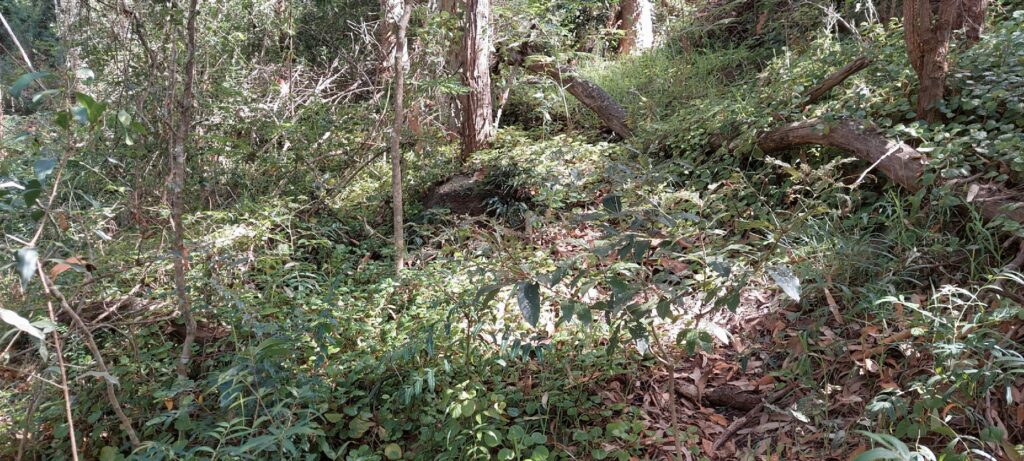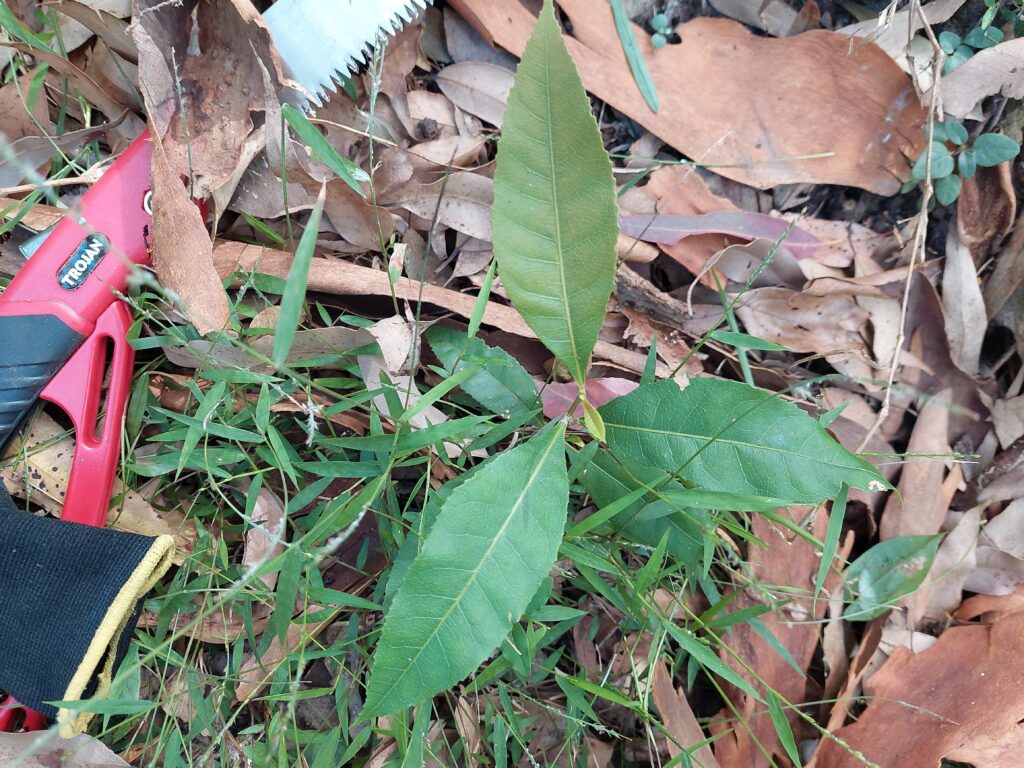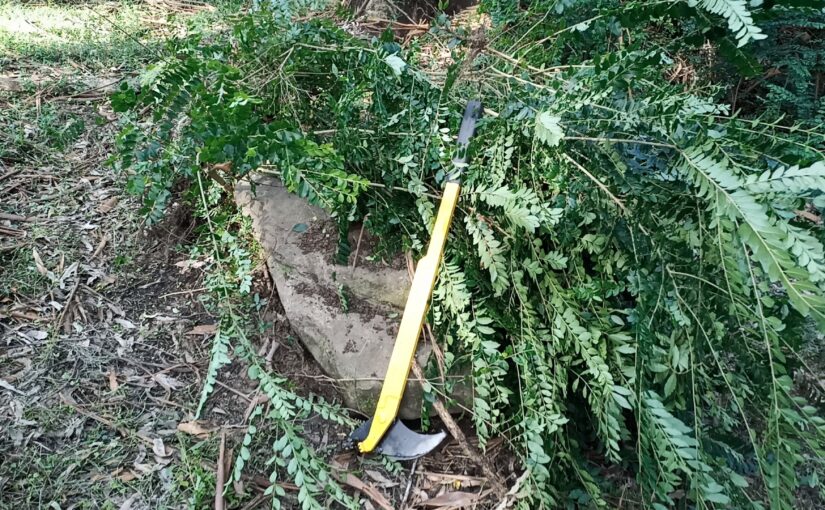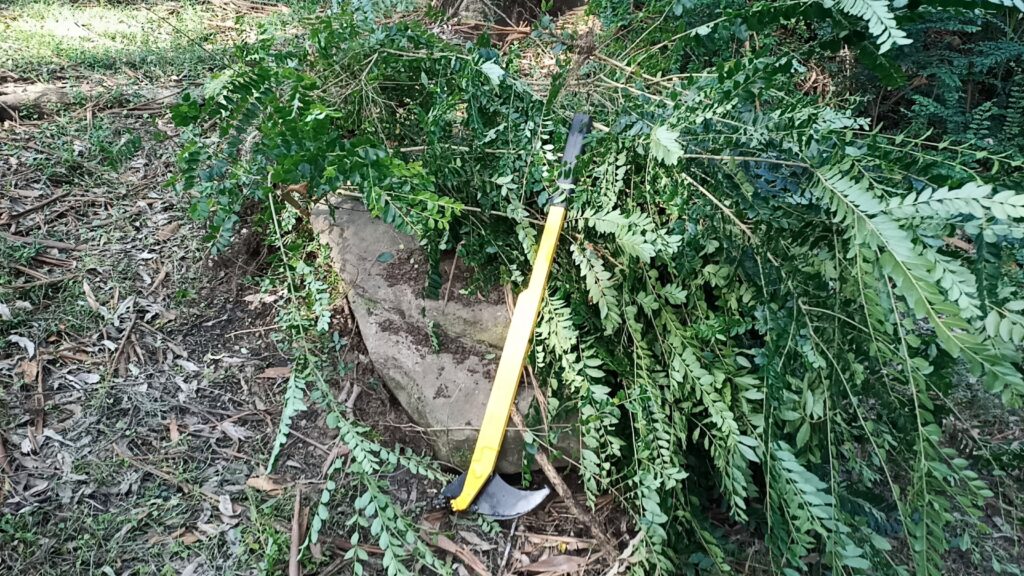I was in the mood to tackle some lantana today but as always, priorities changed. As I walked past ‘site A’ I was disturbed by the density of privet. Lantana contributes but it is the privet that has taken hold at this location. I had previously cleared this area and for this reason, there is numerous young natives popping up. Sandpaper fig, bleeding heart, pittosporum and others are there but their life is hard when they are amongst this:

So I started removing the privet with the weed puller which I had luckily brought with me. While the privet is a big problem, I found it easier to deal with than in the past because most of it was still young and had not fully established itself. Another twelve months and it will be notably harder, I believe.
This is the first patch I cleared:

After lunch I moved along the track and tackled any privet I noticed. I finally got to the bank on the south side of Second fall… it was mostly just small privet.

Past ‘Site A’, I found some natives amongst the fishbone fern so it was worth while to deal with that directly.

I decided it would be more efficient to move downhill and clear the privet from underneath. However, I found the ol’ fallen sandpaper fig to still be being harassed by privet and lantana so I spent the rest of the day at that spot. There is three or four poison peach trees in that location as well so I did my best to help those out.

One of the poison peach trees is a good five meters tall now.
There is still more to do for the ol’ fallen sandpaper tree. I think I will start here next week.


